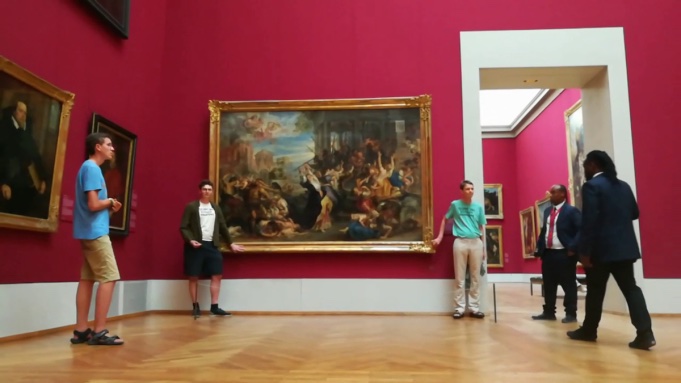Toppled Slave Trader Edward Colston Statue Expected to be Permanently Installed in Bristol Museum
The fate of a statue of 18th-century slave trader Edward Colston toppled by Black Lives Matter protesters in 2020 will finally be decided, as a proposal to put it on permanent display in a museum nears approval.
The statue has been out of the public eye since January 2022, but is expected to return to the M Shed, an institution dedicated to the city’s history, where it was briefly displayed.
In a statement, the mayor of Bristol said: “I remain in support of the view that the best place for the statue is in a museum where its context, and that of what it represents to many communities can be appropriately shared with diverse audiences.”
The statue and its plinth are both Grade II listed, which in England designates historical importance, and ensures certain protections. Bristol City Council’s development control committee is scheduled to vote on the de-listing of the statue on February 21 in order to separate it from its plinth. According to the proposal, the plinth would remain on Colston Avenue, and would eventually receive a new plaque.
In June 2020, a group of protesters pulled the statue from its pedestal in Bristol, England, and rolled it into a nearby harbor. Protesters had targeted the statue given Colston’s involvement in the Royal African Company, a vital enterprise in the British slave trade. Additionally, the harbor where the statue was submerged in was a site where enslaved Africans had been thrown overboard. Images of the toppling went viral, and the statue swiftly became emblematic of the debate over displaying monuments to historical figures linked to slavery and colonization should be on public view.
The statue of Colston was retrieved from the waters, subsequently dividing the Bristol community on whether it should return to its pedestal or be shuttled out of view. In a council report, the Bristol City Council Conservation Committee deemed that the statue’s reinstatement at the harbor was “not a reasonable expectation” as it was a potential target of “civil unrest”.
While seeking a permanent solution, Bristol city council placed the statue on view at the M Shed museum. There, the statue was installed on its side and was accompanied by a timeline that detailed the context around its defacement.
A city-wide survey conducted by the We Are Bristol History Commission reported that 80% of city residents approved of the statue being on display in a museum. Professor Tim Cole, the chair of We Are Bristol History Commission, and an author of the report said in a statement that the project required they “gather many diverse opinions and views that truly demonstrated the complexity of the feelings associated with the statue and the many strands of context associated with it.”
If the proposal is approved, the statue will debut in a new exhibition dedicated to the local history of civilian demonstrations.



